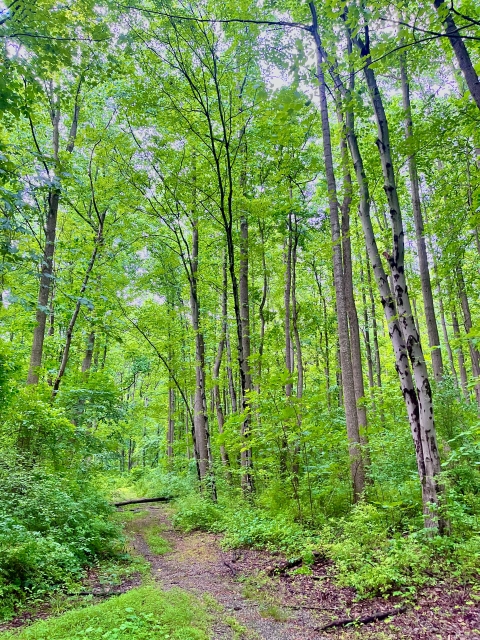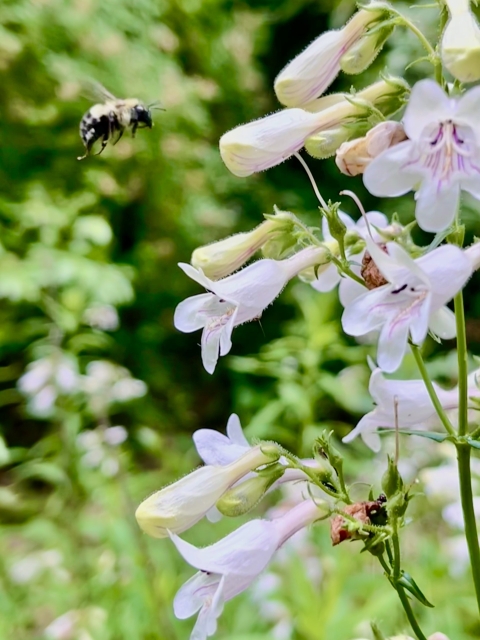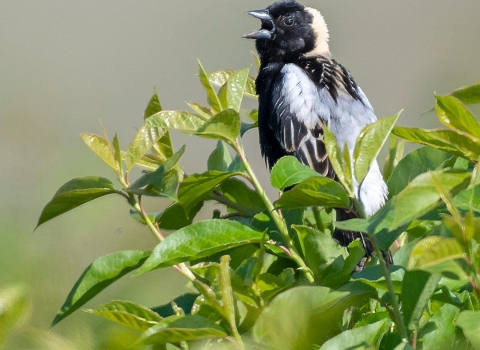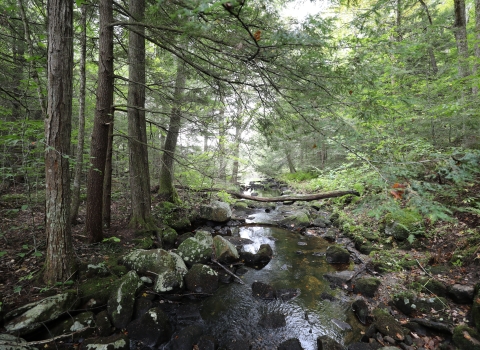Finding large areas of open land in southeastern Pennsylvania is becoming a challenge for local conservationists. Conserving land that connects to preexisting parcels for greater wildlife and watershed protection is even more of a challenge. But like hidden gems in the conservation landscape, opportunities still exist, including a place where people use to camp out under the stars.
Just south of Honey Brook, Pennsylvania, an abandoned campground has arisen as an important conservation opportunity in that area. Formerly known as All Season’s Resort, this 158-acre tract of land will support the local community by offering public recreation, protecting public drinking water resources and conserving wildlife habitat in an area that is quickly losing forests and fields to development.
Now known as the Honey Brook tract of the William Penn State Forest, the land was acquired by Pennsylvania Department of Conservation and Natural Resources (DCNR) in December 2018. Thanks to the support of Pennsylvania DCNR, Natural Lands, the Service, the Pennsylvania Bureau of Forestry, Chester County and Honey Brook Township, the once active campground will be overhauled to remove abandoned structures, rework existing roads into trails and remove debris to create a visitor-friendly outdoor recreation experience.
“Conserving such a large tract of land in this area is a rare opportunity. We are thrilled to be able to expand the William Penn State Forest and the opportunities available there,” said Jack Stefferud, Senior Director of Land Protection for Natural Lands, a non-profit land conservation organization in Pennsylvania.
The land is located within the Highlands region, an area that spans 3.4 million acres along the Appalachian ridgeline, stretching from northwestern Connecticut, through New York and New Jersey, and into eastern Pennsylvania. The conserved properties in this region are critical to protecting drinking water resources for local cities and towns, creating public areas for outdoor recreation and providing habitat for wildlife.
“There is nothing more important than investing in our future by protecting lands like this. Being in the Highlands region, we are grateful for funding opportunities such as the Highlands Conservation Act grant program, which was a significant funding source in conserving this property. Protecting this area will benefit people and wildlife for generations to come,” Stefferud said.
Connecting people to nature is an important aspect of conserving this parcel. Stefferud noted that the property links 664 acres that are either permanently protected publicly accessible lands owned by local municipalities and the county or are under conservation or agricultural easements with the county and land conservancies.
Rick Hartlieb, assistant district forester with the William Penn Forest District in southeast Pennsylvania with the Pennsylvania DCNR, is excited to share the land with the public.
“The public didn’t have the opportunity to have access to an open space with these opportunities in that area before. We provide a full recreation opportunity that did not exist otherwise,” he said.
Hartlieb explained the current plan for the property focusses on cleaning up and maintaining the landscape with the long-term goal of protecting the waters downstream from Honey Brook. Initial efforts have halted illegal dumping and removed excess trash from the landscape. Infrastructure from the former campground will be removed to create a safer atmosphere for guests. Roads will be regraded, and water diversions and sediment controls installed to prevent erosion, keeping excess dirt and debris out of nearby tributaries. Roads and rogue paths no longer needed will be retired so they may be reclaimed to a natural state.
Once complete, the site will offer a parking area and marked trails for hiking, bird watching and horseback riding. Additionally, hunting and hike-in, primitive camping will be permitted, amenities that neighboring public lands are not offering currently. The property is open for public use and will soon be promoted to the public once all clean up and renovations are complete.
Hartlieb noted that the land currently supports a variety of fish and wildlife including deer, woodcock, wood ducks, sunfish and more. The property was acquired with the assistance of funding provided through the Service’s Highlands Conservation Act grant program.
“The Highlands Conservation Act grant program has been absolutely critical for us to grow our program. It’s not easy to acquire large chunks of land anymore,” Hartlieb said.
Highlands Conservation Act land acquisition grants are administered by the Service’s Wildlife and Sport Fish Restoration (WSFR) program. Through the Program, the Service has awarded funding for land conservation projects to state agencies. With an update to the Act in 2022, counties and municipalities are also eligible to receive land conservation grants. To date, this unique public and private partnership has allowed for the conservation of more than 15,000 acres.
Kyla Hastie, acting regional director of the Service’s Northeast Region, is enthusiastic about the opportunities the Honey Brook property will provide to current and future generations.
“Conserving these key natural areas in the Highlands Region provides critical benefits to Pennsylvania’s entire southeast region. The Honey Brook property will help safeguard drinking water resources that serve millions of people, create publicly accessible outdoor recreation spaces and protect important wildlife habitat,” said Hastie. “This is a place where people can connect with nature and embrace the natural landscape around them.”








